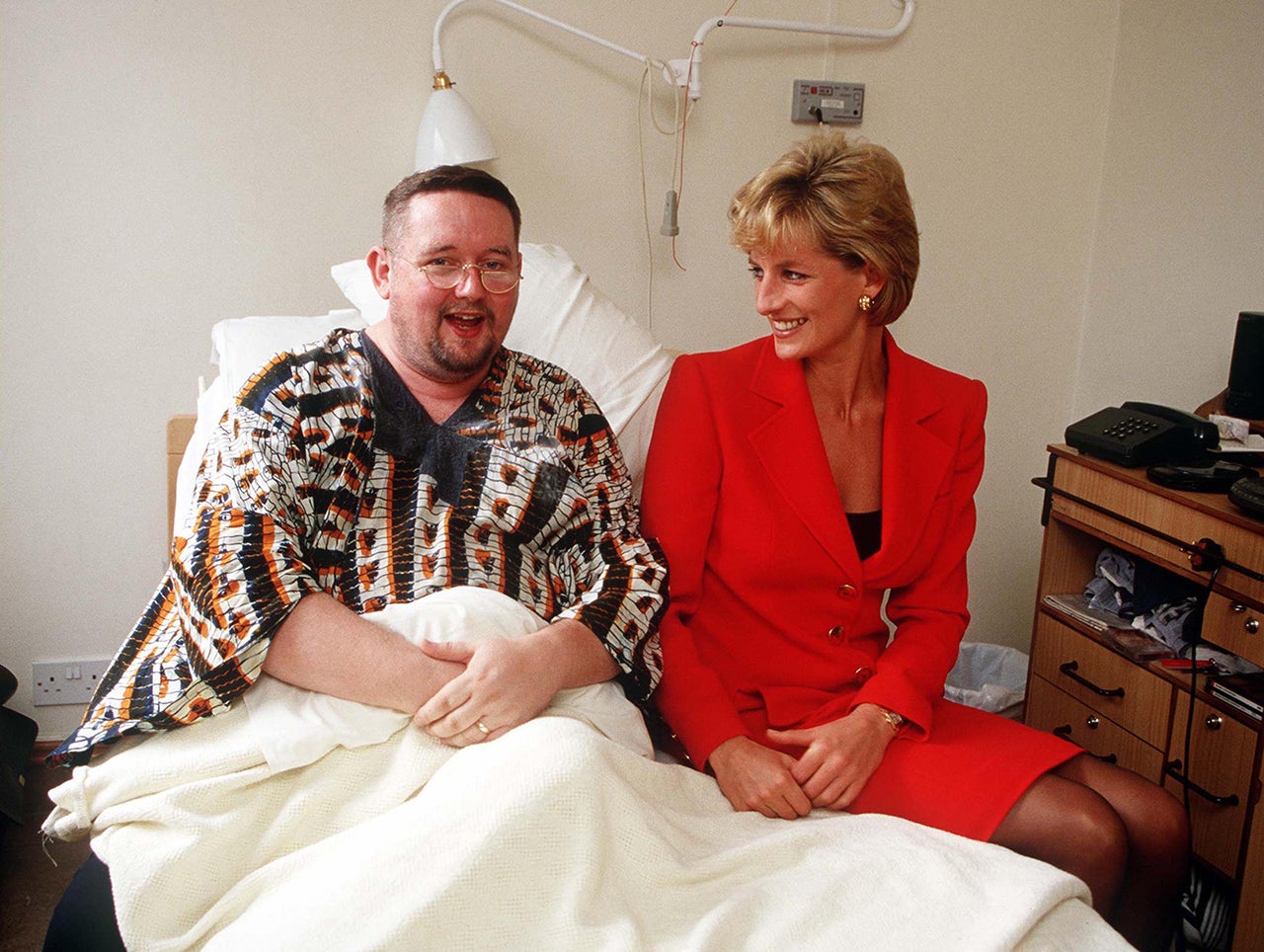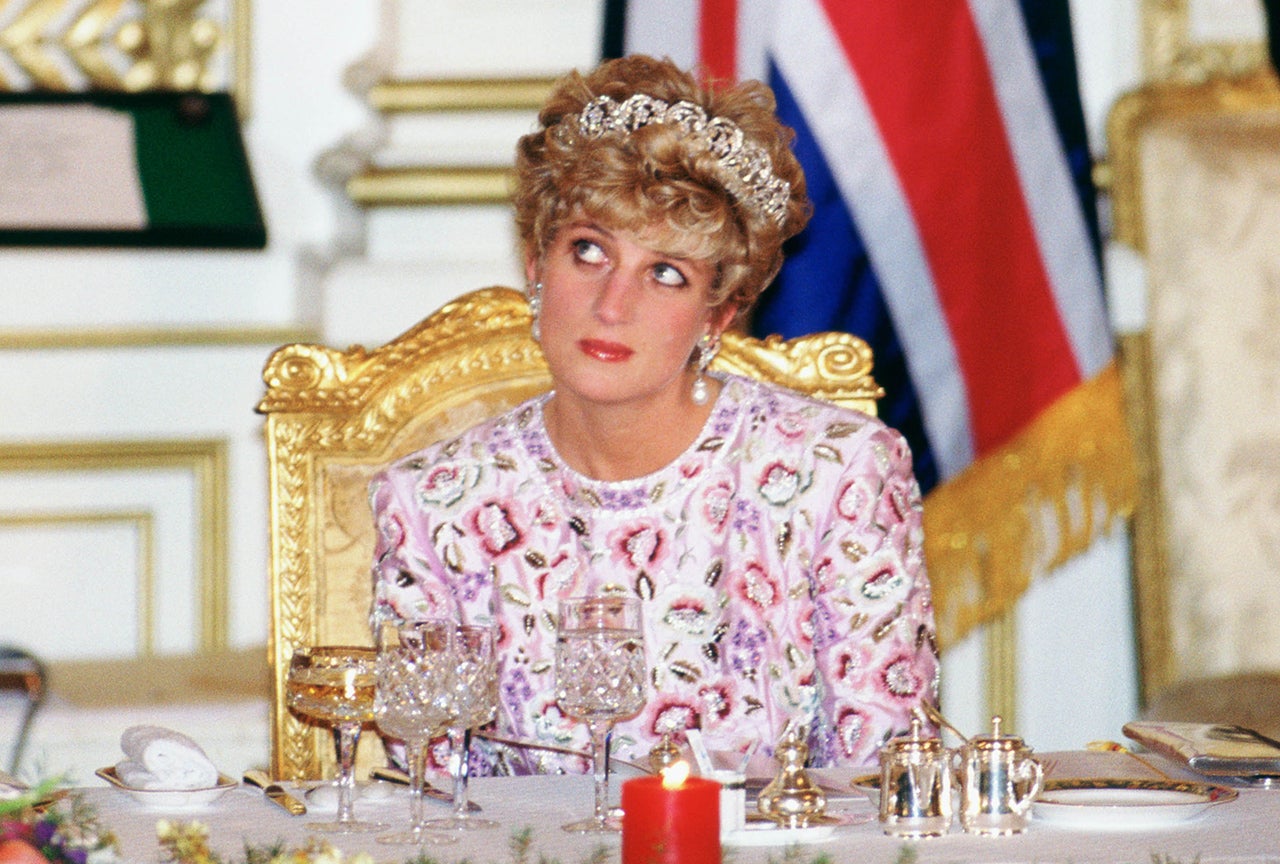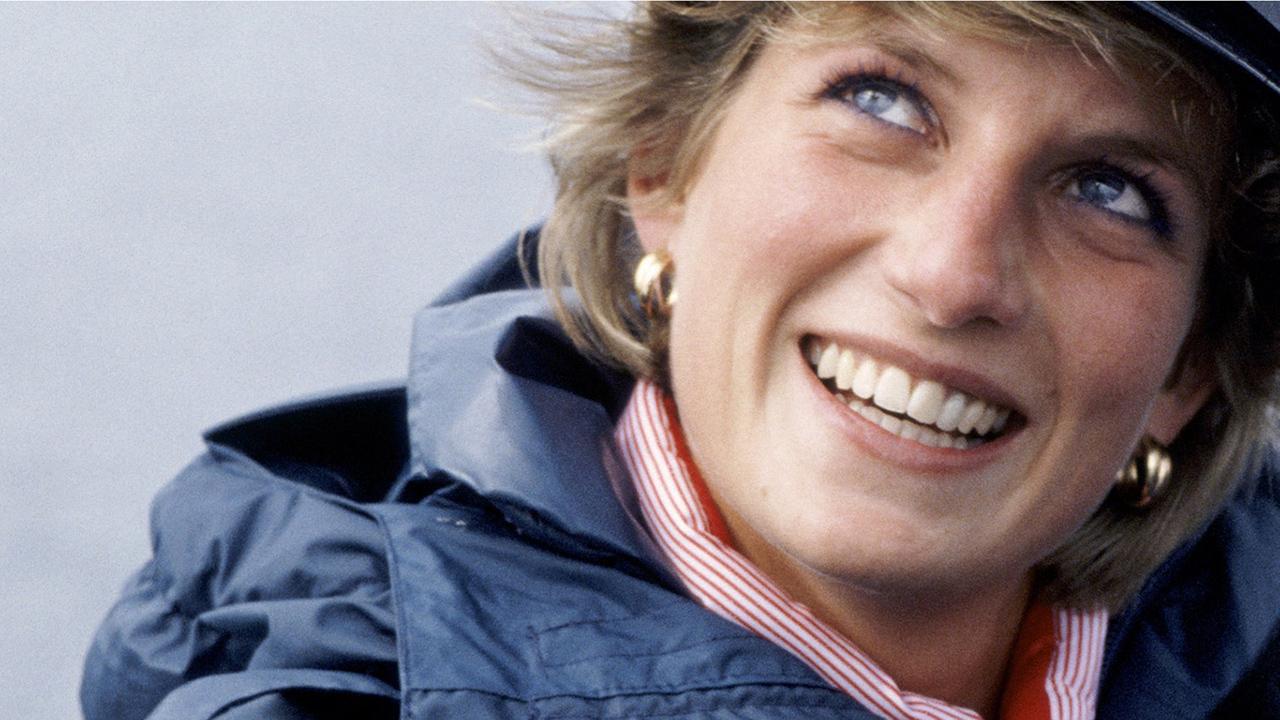In the early morning hours of Sunday, Aug. 31, TVs across America cut to a breaking news report from Paris, France. Princess Diana of Wales had been involved in a serious car accident not half a mile from the Eiffel Tower that would later take her life at the age of 36. The jarring juxtaposition between the sketch comedy and the horrific scenes that aired in the hours that followed played to the nature of just how unreal her death felt, not just in America or in Great Britain, but across the globe.
In her homeland of England, the country stopped, taking a moment to collectively grieve in their disbelief. Morning reporters shared stories of young people in nightclubs who heard the news while out and immediately left the dance floor to bring roses to Buckingham Palace. The masses of flowers and cards around Kensington and Buckingham palaces in London were visible from the air as crowds formed to mourn together and pay their respects.
Citizens wept openly in the streets in masses that had never been seen before or since. The feeling was one of deep loss, confusion, anger, and immense sorrow.
Decades after Diana’s death, she remains the subject of countless documentaries and “tell-all” books, a mysterious, beloved, and at times controversial figure who won the hearts of people all over the world and broke down the traditions of the royal family from the inside. She’s responsible for a new era of the monarchy, even though she was stripped of her royal titles following her divorce in the final years of her life.
Diana knew how to work a scandal, shed light on a cause, and dazzle on a magazine cover the way no public figure has managed to do on the same level since. So stunning and iconic was she that many forget she was merely 20 years old when she married the future king of England and sealed her fate as a public figure.
Diana is still the subject of much speculation from a world desperate to uncover her innermost secrets. Her untimely death left behind a handful of unanswered questions that solidified her celebrity and made her mark on history permanent.
Here are a few of the ways in which her legacy lives on, 20 years after her passing:
Using Her Influence to Better the World

Princess Diana meets AIDs patient at the London Lighthouse center in 1996.
Photo: Princess Diana Archive / Stringer
The royals have always highlighted charitable causes, but Diana put a real human face to suffering with her philanthropic work. She didn’t just visit hospitals; she sat on patients' beds and held their hands.
In fact, when the AIDs crisis was at its height, Diana memorably shook the hand of one patient suffering from the disease, shedding light on the epidemic while also proving that it could not be transferred by a simple touch, a common misconception at the time.
She loaned her voice to many underrepresented people, from the terminally ill to the homeless, and always did so with a personal touch. One topic that was particularly close to her heart was the land mine crisis.

Princess Diana poses with Ken Rutherford (left) and two boy landmine victims Zarko Peric and Malic Bradaric, and Jerry White (right) in Bosnia the month she died.
Photo: AP
She drew attention to the issue with an iconic visit to Angola, where she walked through a field of active land mines, a feat of bravery that was widely reported on at the time. And Diana’s last public appearance prior to her death took place in Bosnia, where she traveled in August 1997 with Dr. Ken Rutherford, a land mine survivor and activist who currently works as the director for James Madison University’s Center for International Stabilization and Recovery (CISR) in Harrisonburg, Virginia.
“Princess Diana was real,” Rutherford tells ET exclusively. “She brought hope into the living rooms of landmine survivors that she visited in Bosnia. And she brought the global land mine crisis into living rooms around the world.”
Three months after her visit to Bosnia, an international treaty was signed outlawing land mines.
“I believe that Diana’s immense energy and capacity to care drew her close to people, especially the children,” Rutherford says. “She was the first celebrity in high stature to join the cause… In my opinion, Princess Diana was the first to grab the hands of land mine survivors -- literally -- and support their cause, saying that their plight should not be forgotten.”
Rutherford and fellow activist Jerry White introduced Diana to several young land mine victims in her final days, and the men appeared in the recent documentary, Diana, Our Mother: Her Life and Legacy, which is told from the perspectives of her two sons, Prince Harry and Prince William. Harry met with Rutherford, White, and the two men who visited with Diana in the final month of her life in Bosnia, acknowledging that they’d seen his mother alive more recently than he had.
“She put her name and put her image and put her passion and energy into something that she generally believed in. She knew that by doing that, it was going to have a ripple effect across the whole world,” Prince Harry noted in the documentary.
This year he has launched a campaign to destroy every remaining land mine, finishing his mother’s work. Harry has also continued Diana’s work on AIDs awareness, getting publicly tested for HIV alongside singer Rihanna. And that’s not the only way her children have honored her legacy.
Shedding Light on Mental Health

Princess Diana at an official state dinner in South Korea in 1992.
Photo: Tim Graham / Contributor
Harry, William, and Kate Middleton, the Duchess of Cambridge, have highlighted one cause above the rest in recent years: mental health and awareness. They have supported soldiers struggling with post-traumatic stress, highlighted the fears of parents and children battling with depression, and much more. Part of this comes from the royals’ own personal experiences with grief, but after looking back at Princess Diana’s life, it’s not too much of a stretch to consider that their work might also stem from their mother’s self-confessed demons.
Diana had a difficult childhood, with her parents splitting in a painful and public divorce while she was still quite young. She was, at times, estranged from both of her parents and stepparents, and many of her close friends have noted that she was eager to find love and start a family of her own.
However, Diana and Charles’ marriage -- as picture-perfect as it appeared from the outset -- was not the stuff of fairy tales. In 1992, Diana contributed to a tell-all book by journalist Andrew Morton that cast Charles in a very negative light and said that his outside dalliances in their marriage led her to several suicide attempts and even to an eating disorder. In the aftermath of the book, Charles’ friends tried to discredit Diana in the press.
“Friends on my husband’s side were indicating that I was, again, unstable, sick and should be put in a home of some sort in order to get better. I was almost an embarrassment… There’s no better way to dismantle a personality than to isolate it,” Diana said in a 1995 interview with BBC’s Panorama.
In that same interview, Diana also noted that she struggled with, “Pretty devastating, rampant bulimia -- if you can have rampant bulimia -- and just a feeling of being no good at anything and being useless and hopeless and failed in every direction.”
Now, 20 years after her death, her children are focused on helping free those suffering from the stigmas of mental illness, depression, and more.
“I think losing your mother at such a young age does end up shaping your life, massively, of course it does, “ Prince Harry told ABC News in 2016. “I find myself trying to be there and give advice to other people who are in similar positions.”
Fashion Icon

Princess Diana attends pre-auction event at Christie's in NYC in June 1997.
Photo: Tim Graham / Contributor
Transitioning from a teenage daycare worker to a princess was no easy feat for the then-naïve Diana, who had no guidance on how to dress herself in the early years of her romance with Prince Charles. When the future Princess of Wales stepped out to announce her engagement in 1981, she received criticism for her slightly stuffy, aged choice of a belted blue suit. Knowing she had to step up her game, Diana sought the advice of designers and experts at British Vogue to help craft a new image that would turn her into one of the greatest style icons of a generation.
She shied away from neutrals, opting instead for bright, cheery colors on official royal visits and later owning her sex appeal in several little black dresses. It wasn’t until after her split from Charles that the world got to see her in high heels and shorter hemlines.
On the evening that Charles gave a televised interview admitting his infidelity, Diana stepped out for a private gallery party in an eye-popping off-the-shoulder Christina Stambolian dress that showed off her legs. The iconic look was later dubbed “The Revenge Dress.”
“I don’t think anyone could argue that after the false start, she acquired great confidence and looked wonderful and did credit to every designer’s clothes that she wore,” said Anna Harvey, the former deputy editor of British Vogue, in a recent documentary about Diana’s fashion.
Two months before her death, Diana held a massive auction of some of her most well-known dresses in New York City, bringing in $3.25 million for cancer and AIDs charities, letting her style live on in more ways than one.

Princess Diana and Kate Middleton wear similar cherry red suit.
Photo: Getty Images
And the style torch has been passed to Diana’s daughter-in-law, the Duchess of Cambridge, who emulates her sophisticated, chic style regularly at her own public engagements.
The mother of two first wowed the world at the royal wedding in April 2011, stepped out in a breathtaking long-sleeved Sarah Burton for Alexander McQueen gown that has gone on to be imitated countless times.
Kate has paid tribute to Diana in more ways than by simply wearing her sapphire engagement ring. The Duchess’s sartorial instinct has been compared to that of the late Princess almost every time she steps out.
Royal Parenting

Princess Diana rides in a horse-drawn carriage in Austria with her sons, Prince William and Prince Harry, in 1994.
Photo: Julian Parker / Contributor
From her infectious smile to her love of fun, Diana seemed happiest when she was surrounded by her two boys. She seemingly brushed aside the reverence surrounding their titles and positions and just treated them like children.
Diana took her sons to Disney World, skiing, on yachts, and around the globe. Her love shone through in every public outing they made together, and in this year’s documentary, Diana, Our Mother: Her Life and Legacy, William and Harry truly opened up for the first time about the Princess of Wales as a mother.
Related Gallery
That less formal style of parenting has passed on to William’s two children, Prince George and Princess Charlotte, so much so that some of his subjects have even questioned his loyalty to the monarchy over his role as a parent.
“I’m concentrating very much on my role as a father, and I take my duties and responsibilities to my family very seriously and I want to bring my children up as good people with the idea of service and duty to others very important,” William told the BBC in April 2016 when asked if he was more devoted to his family than the crown. “But if I can’t give my time to my children as well, then I worry about their future.”
Breaking Down Royal Norms

Prince Charles and Princess Diana in South Korea shortly before their separation.
Photo: Tim Graham / Contributor
Until Diana came on the scene in the early ‘80s, the royal family had been viewed as a mostly picture-perfect, if inaccessible institution. Following the publication of the 1992 tell-all Diana: Her True Story, those walls were broken down. Diana secretly shared her not-so-perfect tale in private tapes to Morton, and the result went on to become a hugely successful book. When the world tried to delegitimize the story, Diana organized a photo op of herself hugging a close friend who had contributed to the book, thus verifying the account. Six months later, Diana and Charles’ separation was announced.
The book lifted the veil of positivity that often surrounded the royal family. The press no longer believed exactly what the palace said. And the race was on for the next scoop.
When Diana sat down for another interview in 1995 -- this time televised -- she really turned the royal family upside down, opening up about her husband’s affair, her inner turmoil, and the Windsor family’s less-than-favorable view of her. Most noteworthy, Diana claimed that Prince Charles was not up for the job of king, saying it would bring her then-estranged husband tremendous stress.
Directly following the interview, Queen Elizabeth recommended that Charles and Diana officially divorce -- a shocking decision from a particularly religious monarch who had historically frowned on divorce within her family throughout her reign. Diana was stripped of her titles and of her protection, leaving the most photographed woman in the world open to the paparazzi and the public.

Queen Elizabeth and Prince Philip visit the crowds outside of Buckingham Palace following Diana's death.
Photo: John Stillwell - PA Images / Contributor
In the days following Diana's death, the Queen, Charles, and other members of the royal family were widely criticized, both by those who accused them of having some involvement in Diana’s passing and those who slammed their behavior after her death.
As Great Britain grieved, Queen Elizabeth remained in Scotland with Harry and William, and the British flag did not fly at half-mast outside of Buckingham Palace. The Sunday morning after her death, the royals went to church, but Diana’s name was not mentioned in the service.
All of this -- though seemingly a cold move -- was due to royal traditions and norms. But with the increasing pressure from the public, Queen Elizabeth was forced to break those traditions and to publicly honor Diana. She gave her first live televised address in decades, honoring Diana’s life and legacy, and memorably bowed her head to Diana’s coffin as it passed the day of the funeral, an unprecedented tribute.
These days, the royal family has transitioned into modern times with the help of Diana’s children and grandchildren, who have gotten even more personal with the public in the past decade. This past year, Harry has opened up about receiving therapy following his mother’s death, and both boys have publicly spoken about her in such an in-depth manner as has never been seen before.
It’s a tribute to the lasting, very human mark Diana left on the monarchy, altering centuries of tradition both from within and outside the palace walls.



